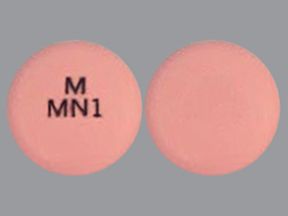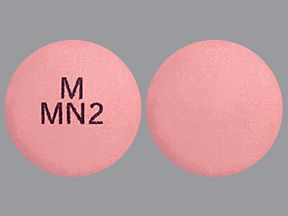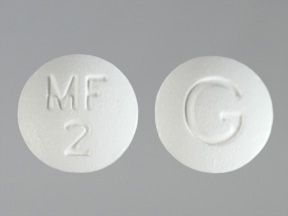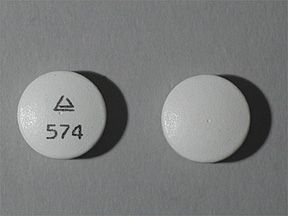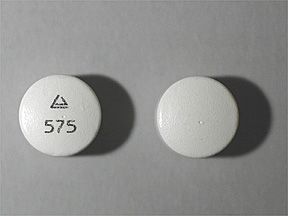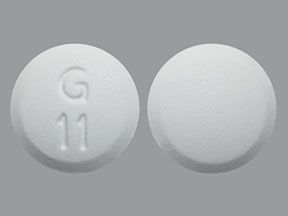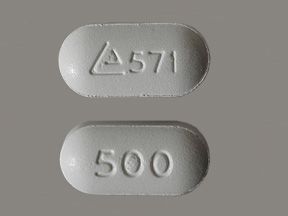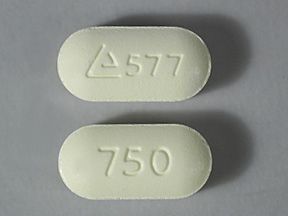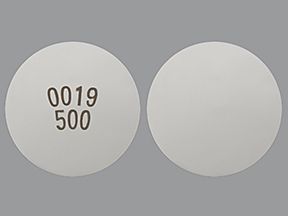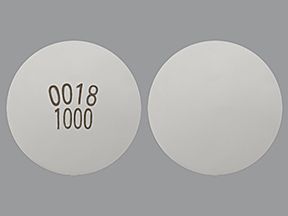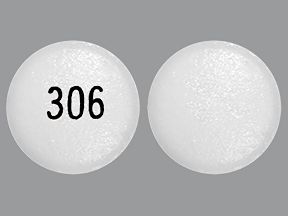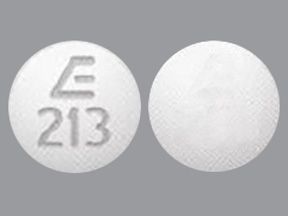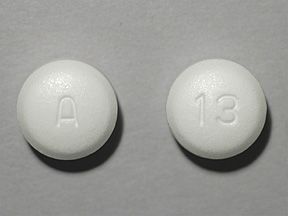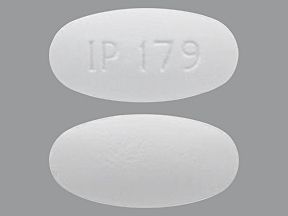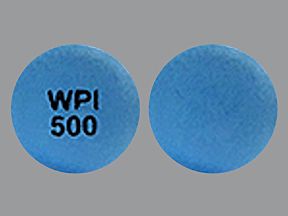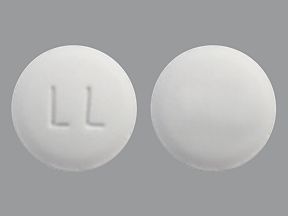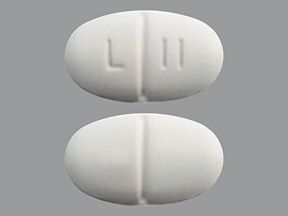- Metformin oral tablets are available as generic drugs and as brand-name drugs. Brand names: Fortamet and Glumetza.
- Metformin comes in two forms: tablet and solution. Both forms are taken by mouth.
- Metformin oral tablet is used to treat high blood sugar levels caused by type 2 diabetes.
Metformin is a prescription drug. It comes as an oral tablet and an oral solution.
Metformin oral tablet comes in two forms: immediate-release and extended-release. The immediate-release tablet is available as a generic drug. The extended-release tablet is available as the brand-name drugs Fortamet and Glumetza.
Both tablet forms are available as generic drugs. Generics usually cost less than brand-name versions. In some cases, they may not be available in all strengths or forms as brand-name drugs.
Why it’s used
Metformin oral tablets are used to treat high blood sugar levels caused by type 2 diabetes. They’re used in combination with diet and exercise.
This drug may be used as part of combination therapy. That means you may need to take it with other drugs.
How it works
Metformin belongs to a class of drugs called biguanides. A class of drugs is a group of medications that work in a similar way. These drugs are often used to treat similar conditions.
Metformin works by:
- reducing the amount of glucose (sugar) made by your liver
- decreasing the amount of glucose your body absorbs
- increasing the effect of insulin on your body
Insulin is a hormone that helps your body remove extra sugar from your blood. This lowers your blood sugar levels.
Metformin oral tablets can cause mild or serious side effects. The following list contains some of the key side effects that may occur while taking metformin. This list does not include all possible side effects.
For more information on the possible side effects of metformin or tips on how to deal with a troubling side effect, talk with your doctor or pharmacist.
More common side effects
The more common side effects that can occur with metformin include:
If these effects are mild, they may go away within a few days or a couple of weeks. If they’re more severe or don’t go away, talk to your doctor or pharmacist.
Serious side effects
Call your doctor right away if you have serious side effects. Call 911 if your symptoms feel life-threatening or if you think you’re having a medical emergency. Serious side effects and their symptoms can include the following:
- Lactic acidosis. Symptoms can include:
- tiredness
- weakness
- unusual muscle pain
- trouble breathing
- unusual sleepiness
- stomach pains, nausea, or vomiting
- dizziness or lightheadedness
- slow or irregular heart rate
- Hypoglycemia (low blood sugar). Symptoms can include:
- headache
- weakness
- confusion
- shaking or feeling jittery
- drowsiness
- dizziness
- irritability
- sweating
- hunger
- fast heart rate
- Low vitamin B12 levels. Symptoms can include:
- low energy
- muscle weakness
- loss of appetite
- tingling or numbness in the hands or feet
Metformin may cause a low blood sugar reaction. If you have a low blood sugar reaction, you need to treat it.
For mild hypoglycemia (55–70 mg/dL), treatment is 15–20 grams of glucose (a type of sugar). You need to eat or drink one of the following:
- 3–4 glucose tablets
- tube of glucose gel
- 1/2 cup of juice or regular, nondiet soda
- 1 cup of nonfat or 1 percent cow’s milk
- 1 tablespoon of sugar, honey, or corn syrup
- 8–10 pieces of hard candy, such as lifesavers
Test your blood sugar 15 minutes after you treat the low sugar reaction. If your blood sugar is still low, then repeat the above treatment. Once your blood sugar is back in the normal range, eat a small snack if your next planned meal or snack is more than 1 hour later.
If you don’t treat low blood sugar, you can have a seizure, pass out, and possibly develop brain damage. Low blood sugar can even be fatal. If you pass out because of a low sugar reaction or cannot swallow, someone will have to give you an injection of glucagon to treat the low sugar reaction. You may need to go to the emergency room.
Metformin oral tablet can interact with several other medications. Different interactions can cause different effects. For instance, some can interfere with how well a drug works, while others can cause increased side effects.
Below is a list of medications that can interact with metformin. This list does not contain all drugs that may interact with metformin.
Before taking metformin, be sure to tell your doctor and pharmacist about all prescription, over-the-counter, and other drugs you take. Also tell them about any vitamins, herbs, and supplements you use. Sharing this information can help you avoid potential interactions.
If you have questions about drug interactions that may affect you, ask your doctor or pharmacist.
Diabetes drugs
Using certain diabetes drugs with metformin can cause low blood sugar levels. If you start taking metformin, your doctor may reduce the dosage of your other diabetes medications. Examples of these drugs include:
- insulin
- medications that release insulin, such as glyburide
Blood pressure drugs
Diuretics are used to lower blood pressure and may increase your blood sugar levels. Taking these drugs with metformin may interfere with the effectiveness of metformin. Examples of these drugs include:
- furosemide
- hydrochlorothiazide
Nifedipine is a calcium channel blocker used to lower blood pressure. It increases the amount of metformin in your body, which may increase your risk of side effects from metformin.
Cholesterol drug
Taking nicotinic acid with metformin may make metformin less effective in lowering your blood sugar.
Glaucoma drugs
Taking metformin with drugs used to treat glaucoma may increase your risk of lactic acidosis. Examples of these drugs include:
- acetazolamide
- brinzolamide
- dorzolamide
- methazolamide
Topiramate
Taking metformin with topiramate, which is used to treat nerve pain and seizures, may increase your risk of lactic acidosis. You shouldn’t use these medications together.
Phenytoin
Taking metformin with phenytoin, which is used to treat seizures, may make metformin less effective in lowering your blood sugar.
Stomach problem drugs
Taking metformin with cimetidine, which is used to treat heartburn and other stomach issues, may increase your risk of lactic acidosis. If you’re taking metformin, your doctor may choose a different medication for you instead of cimetidine.
Phenothiazines
Taking metformin with phenothiazines, which are antipsychotic medications, may make metformin less effective in lowering your blood sugar. Examples of these drugs include:
- chlorpromazine
- fluphenazine
- prochlorperazine
Hormone drugs
Taking metformin with certain hormone drugs may make metformin less effective in lowering your blood sugar. Examples of these drugs include:
- corticosteroids (inhaled and oral) such as:
- budesonide
- fluticasone
- prednisone
- betamethasone
- estrogens such as:
- hormonal birth control, including birth control pills or patches
- conjugated estrogens
- estradiol
Tuberculosis drug
Taking isoniazid with metformin may make metformin less effective in lowering your blood sugar.
Thyroid drugs
Taking metformin with certain thyroid drugs may make metformin less effective in lowering your blood sugar. Examples of these drugs include:
- desiccated thyroid
- levothyroxine
- liothyronine
- liotrix
The metformin dosage your doctor prescribes will depend on several factors. These include:
- the type and severity of the condition you’re using metformin to treat
- your age
- the form of metformin you take
- other medical conditions you may have
Typically, your doctor will start you on a low dosage and adjust it over time to reach the dosage that’s right for you. They’ll ultimately prescribe the smallest dosage that provides the desired effect.
The following information describes dosages that are commonly used or recommended. However, be sure to take the dosage your doctor prescribes for you. Your doctor will determine the best dosage to suit your needs.
Forms and strengths
Generic: Metformin
- Form: immediate-release oral tablet
- Strengths: 500 mg, 850 mg, 1,000 mg
- Form: extended-release oral tablet
- Strengths: 500 mg, 750 mg, 1,000 mg
Brand: Fortamet
- Form: extended-release oral tablet
- Strengths: 1,000 mg
Brand: Glumetza
- Form: extended-release oral tablet
- Strengths: 500 mg, 1,000 mg
Dosage for type 2 diabetes
Adult dosage (ages 18–79 years)
- Immediate-release tablets
- Typical starting dosage: 500 mg, twice per day, or 850 mg, once per day. Take your doses with meals.
- Dosage changes:
- Your doctor may increase your dosage by 500 mg weekly or 850 mg every 2 weeks, up to a total of 2,550 mg taken per day in divided doses.
- If your doctor gives you a dose greater than 2,000 mg per day, you may have to take the medication three times per day.
- Maximum dosage: 2,550 mg per day.
- Extended-release tablets
- Typical starting dosage: 500 mg taken once per day with your evening meal. This applies to all ER tablets except Fortamet. The typical starting dosage for Fortamet is 500–1,000 mg taken once per day with your evening meal.
- Dosage changes:
- Your doctor will increase your dose by 500 mg every week.
- If glucose control is not achieved with once-daily dosing, your doctor may divide your total daily dose and have you take it twice daily.
- Maximum dosage: 2,000 mg per day. (The maximum dose of Fortamet is 2,000 mg per day.)
Child dosage (ages 10–17 years)
- Immediate-release tablets
- Typical starting dosage: 500 mg taken twice per day.
- Dosage changes: Your doctor will increase your dosage by 500 mg every week in divided doses.
- Maximum dosage: 2,000 mg per day.
- Extended-release tablets
- This medication hasn’t been studied in children younger than 18 years of age.
Child dosage (ages 0–9 years)
This medication hasn’t been studied in children younger than 10 years of age and shouldn’t be used.
Senior dosage (ages 80 years and older): People aged 80 years and older shouldn’t start taking metformin unless they have normal kidney function. People at these ages have a higher risk of lactic acidosis. If you’re aged 80 years or older and take metformin, you shouldn’t take the maximum dose.
FDA warning: Lactic acidosis
- This drug has a black box warning. This is the most serious warning from the Food and Drug Administration (FDA). A black box warning alerts doctors and patients about drug effects that may be dangerous.
- Lactic acidosis is a rare but serious side effect of this drug. With this condition, lactic acid builds up in your blood. This is a medical emergency that requires treatment in the hospital. Lactic acidosis is fatal in about half of people who develop it. You should stop taking this drug and call your doctor right away or go to the emergency room if you have symptoms of lactic acidosis.
- Symptoms include weakness, unusual muscle pain, trouble breathing, unusual sleepiness, and stomach pains. They also include nausea or vomiting, dizziness or lightheadedness, and slow or irregular heart rate.
Alcohol use warning
You shouldn’t drink alcohol while taking this drug. Alcohol can increase your risk of lactic acidosis from metformin. Alcohol may also raise or lower your blood sugar levels.
Allergy warning
This drug can cause a severe allergic reaction. Symptoms include:
- trouble breathing
- swelling of your throat or tongue
- hives
Call 911 or go to the nearest emergency room if you develop these symptoms.
Don’t take this drug again if you’ve ever had an allergic reaction to it before. Taking it again could be fatal (cause death).
Warnings for people with certain health conditions
For people with kidney problems: If you have moderate to severe kidney problems, you have a higher risk of lactic acidosis. You shouldn’t take this drug.
For people with liver problems: Liver disease is a risk factor for lactic acidosis. You shouldn’t take this drug if you have liver problems.
For people who plan to have an imaging procedure: You’ll need to stop taking this drug for a short time if you plan to have an injection of dye or contrast for an imaging procedure. This can affect how your kidneys work and put you at risk of lactic acidosis.
For people with illnesses or plans to have surgery: Tell your doctor if you have a fever or infection, are injured, or plan to have surgery or another medical procedure. They may need to change your dosage of this drug.
For people with diabetic ketoacidosis: You shouldn’t use this drug to treat diabetic ketoacidosis.
For people with heart problems: If you have a condition in which oxygen to your heart is decreased, such as recent heart attack or heart failure, your risk of lactic acidosis is higher. You shouldn’t take this drug.
For people with type 1 diabetes: Metformin shouldn’t be used to treat type 1 diabetes. If you have type 1 diabetes, talk with your doctor about treatment options that are right for your condition.
Warnings for certain groups
For pregnant women: There haven’t been enough studies done in pregnant humans to be certain how this drug might affect the fetus. Research in animals has not shown negative effects to the fetus when the mother takes the drug. However, animal studies don’t always predict the way humans would respond.
Talk to your doctor if you’re pregnant or planning to become pregnant. This drug should only be used in pregnancy if clearly needed.
It’s important for women with type 2 diabetes to treat their condition even during pregnancy. Pregnant women typically take insulin to control their blood sugar level, rather than metformin.
For women who are breastfeeding: This drug may pass into breast milk and may cause side effects in a child who is breastfed. Talk to your doctor if you breastfeed your baby. You may need to decide whether to stop breastfeeding or stop taking this medication.
For seniors: People 80 years of age and older shouldn’t start taking metformin unless they have normal kidney function. People at these ages have a higher risk of lactic acidosis. If you’re 80 years or older and taking metformin, you shouldn’t take the maximum dosage.
For children: The immediate-release form of this drug has not been established as safe and effective for use in children younger than 10 years.
The extended-release form of this drug has not been established as safe and effective for use in children younger than 18 years.
Metformin oral tablet is used for long-term treatment. It comes with serious risks if you don’t take it as prescribed.
If you stop taking the drug or don’t take it at all: If your condition improved while taking this medication regularly and you stop taking it, your symptoms of type 2 diabetes may come back.
If you don’t take this drug at all, your symptoms of type 2 diabetes may not improve or may even get worse over time.
If you miss doses or don’t take the drug on schedule: Your medication may not work as well or may stop working completely. For this drug to work well, a certain amount needs to be in your body at all times.
If you take too much: You could have dangerous levels of the drug in your body. You may have the following symptoms:
- stomach pain
- nausea
- vomiting
- diarrhea
- drowsiness
- headache
- lactic acidosis
If you think you’ve taken too much of this drug, call your doctor or seek guidance from the American Association of Poison Control Centers at 800-222-1222 or through their online tool. But if your symptoms are severe, call 911 or go to the nearest emergency room right away.
What to do if you miss a dose: If you forget to take your dose, take it as soon as you remember. If it’s just a few hours before the time for your next dose, then only take one dose at that time. Never try to catch up by taking two doses at once. This could result in dangerous side effects.
How to tell if the drug is working: Your blood sugar should be near your target range as decided by your doctor. Your symptoms of diabetes should also get better.
Keep these considerations in mind if your doctor prescribes metformin oral tablet for you.
General
- This drug should be taken with food.
- The extended-release tablets should not be crushed or cut. However, the regular oral tablets may be crushed or cut.
Storage
- Keep this drug at a temperature between 68°F and 77°F (20°C and 25°C). It can be stored briefly at temperatures between 59°F and 86°F (15°C and 30°C).
- Keep this drug away from light and high temperatures.
- Don’t store this medication in moist or damp areas, such as bathrooms.
Travel
When traveling with your medication:
- Always carry your medication with you. When flying, never put it into a checked bag. Keep it in your carry-on bag.
- Don’t worry about airport X-ray machines. They can’t hurt your medication.
- You may need to show airport staff the pharmacy label for your medication. Always carry the original prescription-labeled container with you.
- Don’t put this medication in your car’s glove compartment or leave it in the car. Be sure to avoid doing this when the weather is very hot or very cold.
Self-management
Your doctor may have you regularly test your blood sugar levels at home. If your doctor decides that you need to do this, you’ll need the following:
- sterile alcohol wipes
- lancing device and lancets (needles used to get drops of blood from your finger to test your blood sugar)
- blood sugar test strips
- blood glucose monitoring machine
- needle container for safe disposal of lancets
Ask your doctor or pharmacist how to use your blood glucose monitoring machine.
Clinical monitoring
Before starting and during your treatment with this drug, your doctor may check your:
- blood sugar levels
- glycosylated hemoglobin (A1C) levels. This test measures your blood sugar control over the last 2–3 months.
- cholesterol
- vitamin B12 levels
- kidney function
Your diet
When used in combination with lifestyle changes, such as improved diet, increased exercise, and not smoking, this drug can help lower your blood sugar levels. Follow the nutrition plan that your doctor, registered dietitian, or diabetes educator recommends.
Hidden costs
If your doctor decides that you need to test your blood sugar at home, you’ll need to purchase the following:
- sterile alcohol wipes
- lancing device and lancets (needles used to get drops of blood from your finger to test your blood sugar)
- blood sugar test strips
- blood glucose monitoring machine
- needle container for safe disposal of lancets
Some of these items, such as monitoring devices and test strips, may be covered by health insurance. Check your individual plan for details.
There are other drugs available to treat your condition. Some may be better suited for you than others. Talk to your doctor about other drug options that may work for you.
Disclaimer: Medical News Today has made every effort to make certain that all information is factually correct, comprehensive, and up-to-date. However, this article should not be used as a substitute for the knowledge and expertise of a licensed healthcare professional. You should always consult your doctor or other healthcare professional before taking any medication. The drug information contained herein is subject to change and is not intended to cover all possible uses, directions, precautions, warnings, drug interactions, allergic reactions, or adverse effects. The absence of warnings or other information for a given drug does not indicate that the drug or drug combination is safe, effective, or appropriate for all patients or all specific uses.

